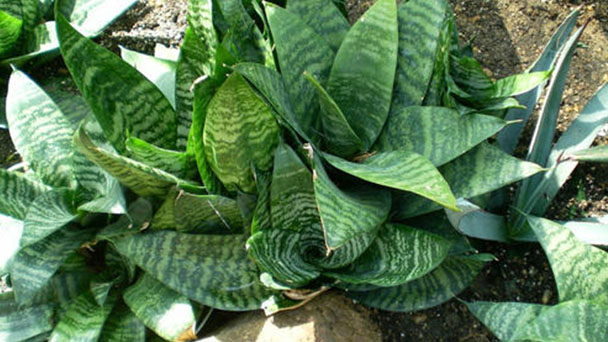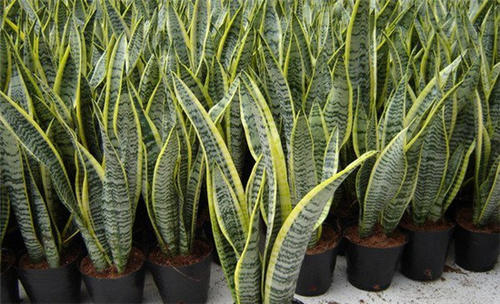How to grow and care for Sansevieria Trifasciata
Written by Maggie
Dec 17 2020

Sansevieria Trifasciata (also known as snake grass or Mother-in-law's tongue) is one of the most common and hardy indoor plant varieties. As an architectural species, it is characterized by hard leaves, which vary in height from 6 inches to 8 feet, depending on the species.Serpents usually have green bands of leaves, while the species commonly known as granny's tongue has a typical yellow border.
Sansevieria Trifasciata is a member of the asparagines family, a relative of garden asparagus.Sansevieria was originally planted in China as a prized houseplant because people believed that the eight gods endowed those who grew snake grass with their virtues (longevity, prosperity, wisdom, beauty, art, poetry, health and strength). Sansevieria is also one of several plants selected by NASA to study how plants can be used to clean air and combat "sick building syndrome." Mountain Sevieria has the ability to remove formaldehyde and benzene from the air, according to a study by the University of Georgia's Department of Horticulture and Yonsei University's Environmental Institute in Seoul, South Korea.

How to grow Sansevieria Trifasciata
1. Soil: The soil for potted Sansevieria Trifasciata should be one with good air permeability, strong drainage and fertile soil. Therefore, when breeding tiger orchids, we can use perlite, peat, saprolite and sandy soil in a ratio of 2 to 4 to 3 to 2.
2, Water: Enough water is conducive to the growth of Sansevieria Trifasciata, but too much water will lead to Sansevieria Trifasciata rotten roots and leaves, so watering we generally follow the "less not more, rather dry not wet" principle.
3, Light: sufficient sunlight is conducive to the growth of Sansevieria Trifasciata, so in addition to the summer need to do shading measures, other seasons as long as the normal light is good. One thing to keep in mind is that overcast conditions can make the Sansevieria Trifasciata grow slowly or its branches thin.
4, Basin change: Sansevieria Trifasciata soil fertility requirements is not high, so we do not need to frequent basin change, two years can also be changed, but one thing to remember, when changing the basin, you need to choose a good drainage pot, so as to avoid the soil water will lead to root rot.

How to care for Sansevieria Trifasciata
1. Temperature: The temperature below 5 degrees Celsius is not conducive to the growth of Sansevieria Trifasciata, and will even lead to the death of Sansevieria Trifasciata, so we had better move the Sansevieria Trifasciata to indoor breeding in winter.
2. Light: Direct, hot light can burn And even make Sansevieria Trifasciata sick. So in the summer, we need to do shading. In addition, too much heat can cause Sansevieria Trifasciata to fall ill, so conserve air circulation.
3. Pruning: For Sansevieria Trifasciata to grow better, we need to regularly trim the fallen branches, overgrown branches, and new flower buds, which will promote the germination of the buds below and the overall shape adjustment.

Latest Updated
- Benefits of Bugleweed - 7 Science-backed Health Benefits
- Bugleweed Dangers & Side Effects - Is It Poisonous?
- How to Plant Evergreen Trees - What You Should Know
- When to Plant Evergreens - Grow Guide for Evergreen Trees
- 12 Wonderful Evergreen Shrubs for Your Garden
- 12 Popular Evergreen Plants with Pictures for Beginners
- When And How To Prune A Lilac Bush Like a Pro
- How to Grow & Care for Lilac Vine (Hardenbergia Violacea)
- Japanese Lilac Tree (Syringa Reticulata) Care & Propagation Guide
- Shumard Oak Pros and Cons - What to Know
Popular Articles
- Winter maintenance of Antirrhinum Majus
- How to Grow Terminalia Mantaly Tree
- How to Grow and Care for Crossostephium Chinense
- How to grow Antirrhinum Majus in spring
- Peristeria Elata (Dove Orchid) Profile: Info & Care Guide
- Underwatered Snake Plant (Sansevieria Trifasciata) - Signs And How To Fix
- How to Care for Brazilian Jasmine Plant (Mandevilla Sanderi)
- How to Grow & Care for Graptopetalum Purple Delight in Summer
- Rosa Chinensis (China Rose): Plant Growing & Care Tips
- How to Care for Baby Sun Rose (Aptenia Cordifolia)